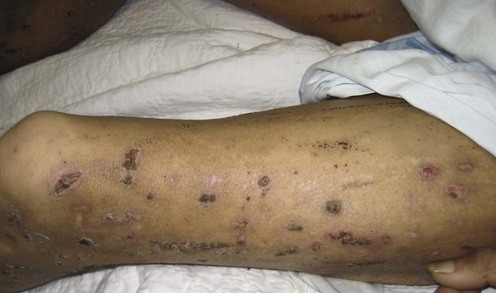Delusions of parasitosis

(From Robles, D.T., Romm, S., Combs, H., Olson, J., Kirby, P., 2008. Delusional disorders in dermatology: a brief review. Dermatology Online Journal 14 (6), 2. ©2008.)
Specific investigations

(From Robles, D.T., Romm, S., Combs, H., Olson, J., Kirby, P., 2008. Delusional disorders in dermatology: a brief review. Dermatology Online Journal 14 (6), 2. ©2008.)
